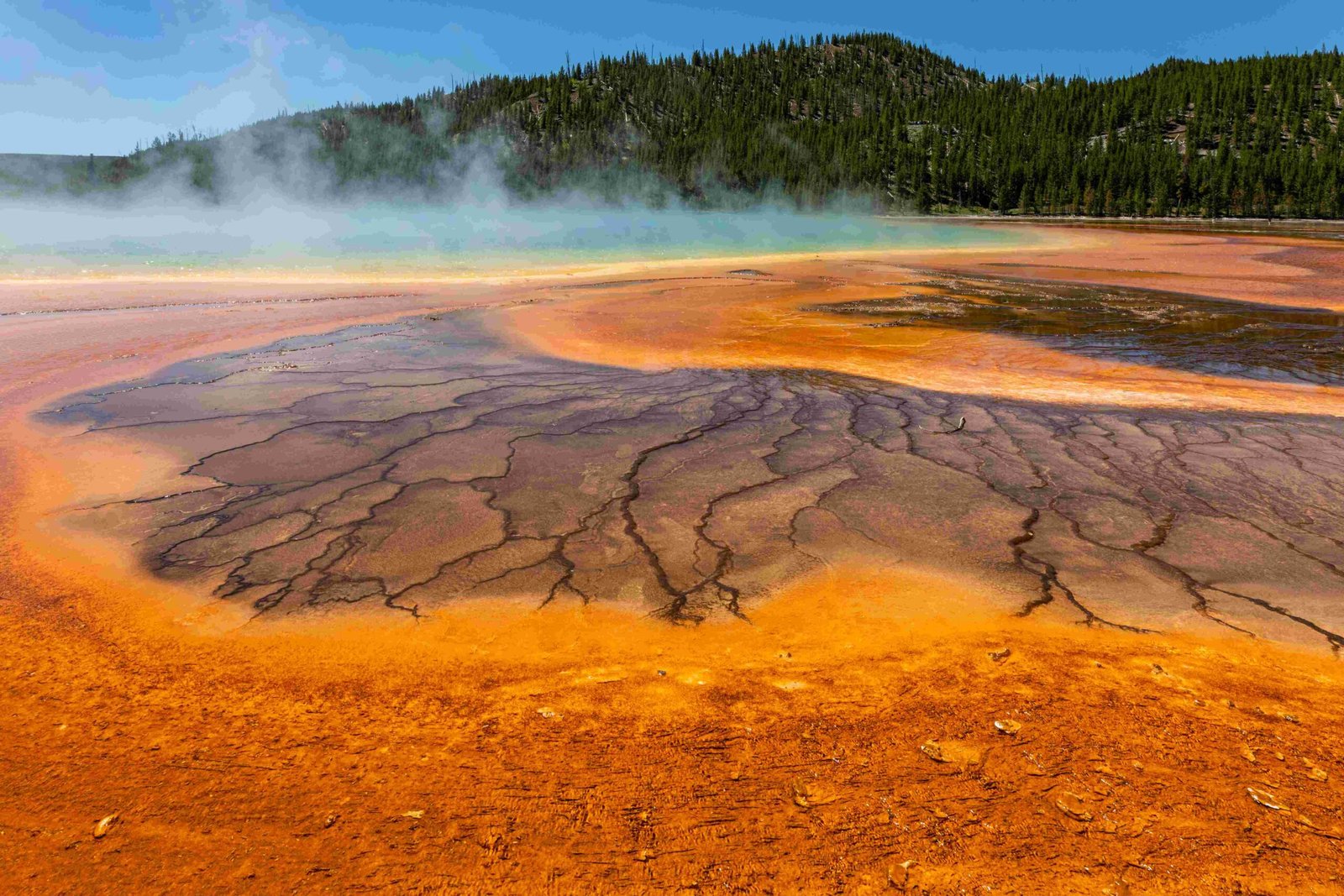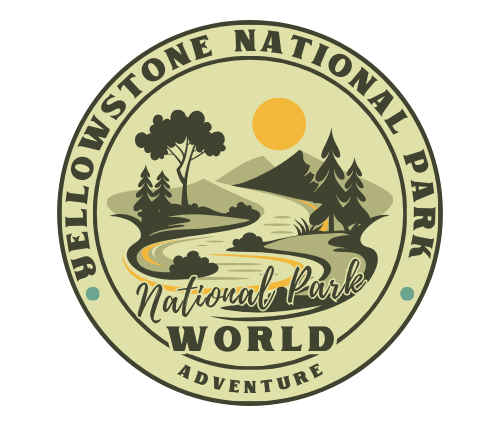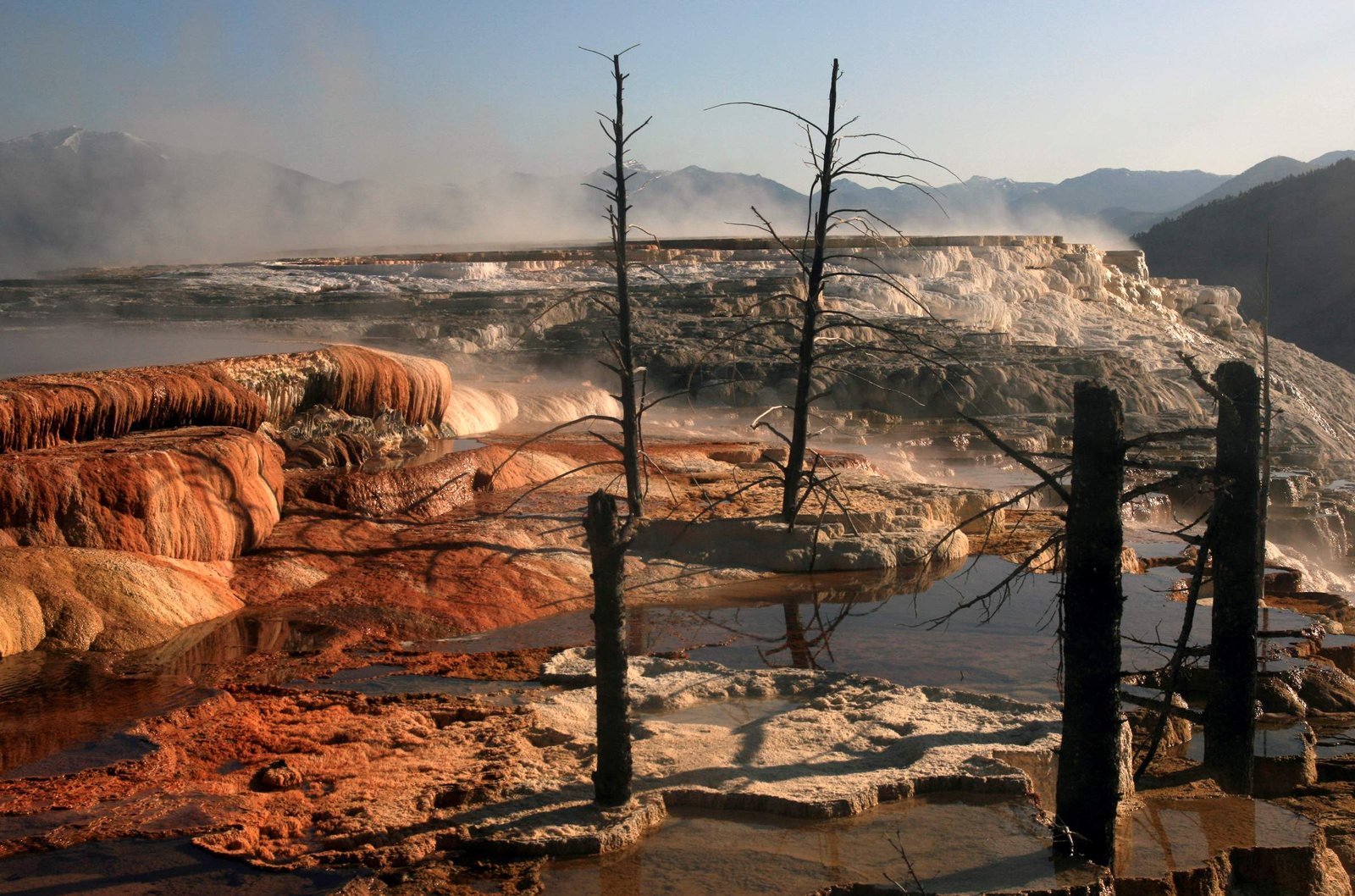The Fountain Walk, also known as the Fountain Paint Pot Trail, is a captivating 0.62-mile loop in Yellowstone National Park. This easy boardwalk trail showcases a diverse array of geothermal features, including bubbling mud pots, colorful hot springs, and steaming fumaroles. Located in the Lower Geyser Basin, this accessible trail offers visitors a chance to witness the park’s unique hydrothermal activity up close, making it a must-see attraction for nature enthusiasts and casual hikers alike.
What Are the Trail Details for the Fountain Walk?

The Fountain Paint Pot Trail, often referred to as the Fountain Walk, is a short but fascinating journey through Yellowstone’s geothermal wonders. Here are the key details:
- Distance: Approximately 0.62 miles (1.0 km)
- Trail Type: Loop
- Difficulty: Easy
- Elevation Gain: Minimal
- Estimated Time: 12-30 minutes, depending on observation time
The trail consists of boardwalks and paved walkways, making it generally easy to navigate. However, it’s important to note that the surface can become slippery when wet or icy.
What Geothermal Features Can Visitors Expect to See?

The Fountain Walk offers a diverse showcase of Yellowstone’s hydrothermal features:
- Mud Pots: Bubbling, gurgling pools of mud
- Hot Springs: Colorful, steaming pools of water
- Geysers: Erupting fountains of hot water and steam
- Fumaroles: Steam vents releasing pressure from underground
Each feature provides a unique glimpse into the park’s volcanic activity, with interpretive signs along the trail offering educational insights.
How Accessible Is the Fountain Walk?
While the Fountain Walk is generally considered easy, there are some accessibility considerations:
- Wheelchair Access: Not fully accessible due to steep sections and stairs
- Stroller Friendly: Not recommended due to stairs and narrow boardwalks
- Surface Type: Combination of boardwalk and paved walkways
Visitors with mobility concerns should be aware of these limitations and plan accordingly.
What Are the Best Times to Visit the Fountain Walk?
The Fountain Walk can be enjoyed year-round, but each season offers a unique experience:
| Season | Pros | Cons |
|---|---|---|
| Spring | Fewer crowds, vibrant colors | Unpredictable weather |
| Summer | Warm weather, longer daylight | Peak crowds, potential thunderstorms |
| Fall | Beautiful foliage, mild weather | Shorter days, cooler temperatures |
| Winter | Snow-covered landscape, fewer visitors | Cold temperatures, limited access |
Early morning visits often provide the best opportunity to avoid crowds and potentially witness more active geothermal features.
What Safety Precautions Should Visitors Take?
Safety is paramount when visiting the Fountain Walk. Here are some essential precautions:
- Stay on designated boardwalks and trails at all times
- Keep children close and under supervision
- Do not touch or approach wildlife
- Bring plenty of water to stay hydrated
- Wear appropriate footwear for potentially slippery surfaces
- Be aware of sudden weather changes
Remember, the geothermal features are extremely hot and acidic. Straying from the boardwalk can result in severe injury or death.
What Amenities Are Available Near the Fountain Walk?
Visitors to the Fountain Walk can take advantage of several nearby amenities:
- Parking: Available at the trailhead on Grand Loop Road
- Restrooms: Located near the trailhead
- Visitor Center: The Old Faithful Visitor Education Center is a short drive away
- Lodging: Old Faithful Inn and other accommodations are within driving distance
While there are no specific picnic areas mentioned at the trailhead, the park offers numerous designated picnic spots in nearby areas.
How Does the Fountain Walk Fit into a Larger Yellowstone Itinerary?
The Fountain Walk is an excellent addition to any Yellowstone itinerary:
- Morning Start: Begin your day with an early visit to avoid crowds
- Combine with Old Faithful: The trail is a short drive from Old Faithful geyser
- Midday Break: Use it as a midday activity between longer hikes
- Photography Opportunity: Visit during golden hour for stunning light on the features
- Educational Stop: Incorporate it into a day focused on learning about geothermal activity
Its short duration makes it easy to fit into even the busiest park schedule.
What Should Photographers Know About the Fountain Walk?
For photographers, the Fountain Walk offers unique opportunities:
- Best Light: Early morning or late afternoon for softer light
- Seasonal Variations: Winter for steam effects, summer for vibrant colors
- Composition Tips: Use boardwalks for leading lines, capture reflections in still pools
- Gear Recommendations: Wide-angle lens for landscapes, telephoto for wildlife
- Challenges: High contrast scenes, potential lens fogging from steam
Remember to protect your gear from the corrosive effects of steam and sulfur.
How Can Visitors Maximize Their Learning Experience on the Fountain Walk?
To get the most educational value from your visit:
- Read interpretive signs along the trail
- Download the NPS Yellowstone app for additional information
- Attend ranger-led programs if available (check at visitor centers)
- Observe and compare different types of geothermal features
- Learn about the microbial life that thrives in extreme conditions
- Understand the connection between Yellowstone’s geology and its hydrothermal features
Engaging with these resources can transform a simple walk into a rich learning experience.
What Are Some Lesser-Known Facts About the Fountain Walk Area?
Discover some intriguing facts about the Fountain Walk and its surroundings:
- The area was once home to the Fountain Hotel, which operated from 1891 to 1916
- Microorganisms living in the hot springs contribute to their vibrant colors
- The mud pots’ activity levels change with the seasons and precipitation
- Native Americans used the area for thousands of years before it became a national park
- The nearby Firehole River is warmed by the runoff from geothermal features
These facts add depth to the visitor experience, connecting the present-day trail to its rich natural and cultural history.
By exploring the Fountain Walk One Mile Yellowstone National Park, visitors can witness the raw power and beauty of Earth’s geothermal processes in a compact, accessible setting. This trail serves as a microcosm of Yellowstone’s larger hydrothermal systems, offering an unforgettable experience for all who venture along its path.
References:
1. 10 Adventures – The Fountain Paint Pots Trail: Geothermal Wonder
2. National Park Service – Fountain Paint Pot Nature Trail Tour Interactive Map
3. AllTrails – Fountain Paint Pot Trail, Montana

